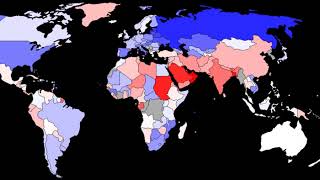Friday, 21 November, 2025г.
















Где искать: по сайтам Запорожской области, статьи, видео ролики
пример: покупка автомобиля в Запорожье
Human sex ratio | Wikipedia audio article
This is an audio version of the Wikipedia Article:
Human sex ratio
00:01:39 1 Natural ratio
00:06:16 2 Factors affecting sex ratio in humans
00:06:27 2.1 Fisher's principle
00:06:56 2.2 Natural factors
00:10:30 2.3 Environmental factors
00:10:39 2.3.1 Effects of climate change
00:11:51 2.3.2 Effects of gestation environment
00:12:45 2.3.3 Effects of chemical pollution
00:16:01 2.4 Social factors
00:19:27 2.4.1 Early marriage and parents' age
00:20:29 2.4.2 Data sources and data quality issues
00:22:46 2.5 Economic factors
00:24:11 2.6 Other gestational factors
00:25:18 3 Gender imbalance
00:31:46 4 Consequences of a high sex ratio
00:33:31 5 History
00:35:00 6 See also
Listening is a more natural way of learning, when compared to reading. Written language only began at around 3200 BC, but spoken language has existed long ago.
Learning by listening is a great way to:
- increases imagination and understanding
- improves your listening skills
- improves your own spoken accent
- learn while on the move
- reduce eye strain
Now learn the vast amount of general knowledge available on Wikipedia through audio (audio article). You could even learn subconsciously by playing the audio while you are sleeping! If you are planning to listen a lot, you could try using a bone conduction headphone, or a standard speaker instead of an earphone.
You can find other Wikipedia audio articles too at:
https://www.youtube.com/channel/UCuKfABj2eGyjH3ntPxp4YeQ
You can upload your own Wikipedia articles through:
https://github.com/nodef/wikipedia-tts
"The only true wisdom is in knowing you know nothing."
- Socrates
SUMMARY
=======
In anthropology and demography, the human sex ratio is the ratio of males to females in a population. More data is available for humans than for any other species, and the human sex ratio is more studied than that of any other species, but interpreting these statistics can be difficult.
Like most sexual species, the sex ratio in humans is approximately 1:1. Due to higher female fetal mortality, the sex ratio at birth worldwide is commonly thought to be 107 boys to 100 girls, although this value is subject to debate in the scientific community. The sex ratio for the entire world population is 102 males to 100 females (2017 est.). Depending upon which definition is used, between 0.1% and 1.7% of live births are intersex.Gender imbalance may arise as a consequence of various factors including natural factors, exposure to pesticides and environmental contaminants, war casualties, sex-selective abortions, infanticides, aging, and deliberate gendercide.
Human sex ratios, either at birth or in the population as a whole, are reported in any of four ways: the ratio of males to females, the ratio of females to males, the proportion of males, or the proportion of females. If there are 108,000 males and 100,000 females the ratio of males to females is 1.080 and the proportion of males is 51.9%. Scientific literature often uses the proportion of males. This article uses the ratio of males to females, unless specified otherwise.
Теги:
human sex ratio anthropology demographics gender wikipedia audio article learning by listening improves your listening skills learn while on the move reduce eye strain text to speech
Похожие видео
Мой аккаунт


 У вашего броузера проблема в совместимости с HTML5
У вашего броузера проблема в совместимости с HTML5


